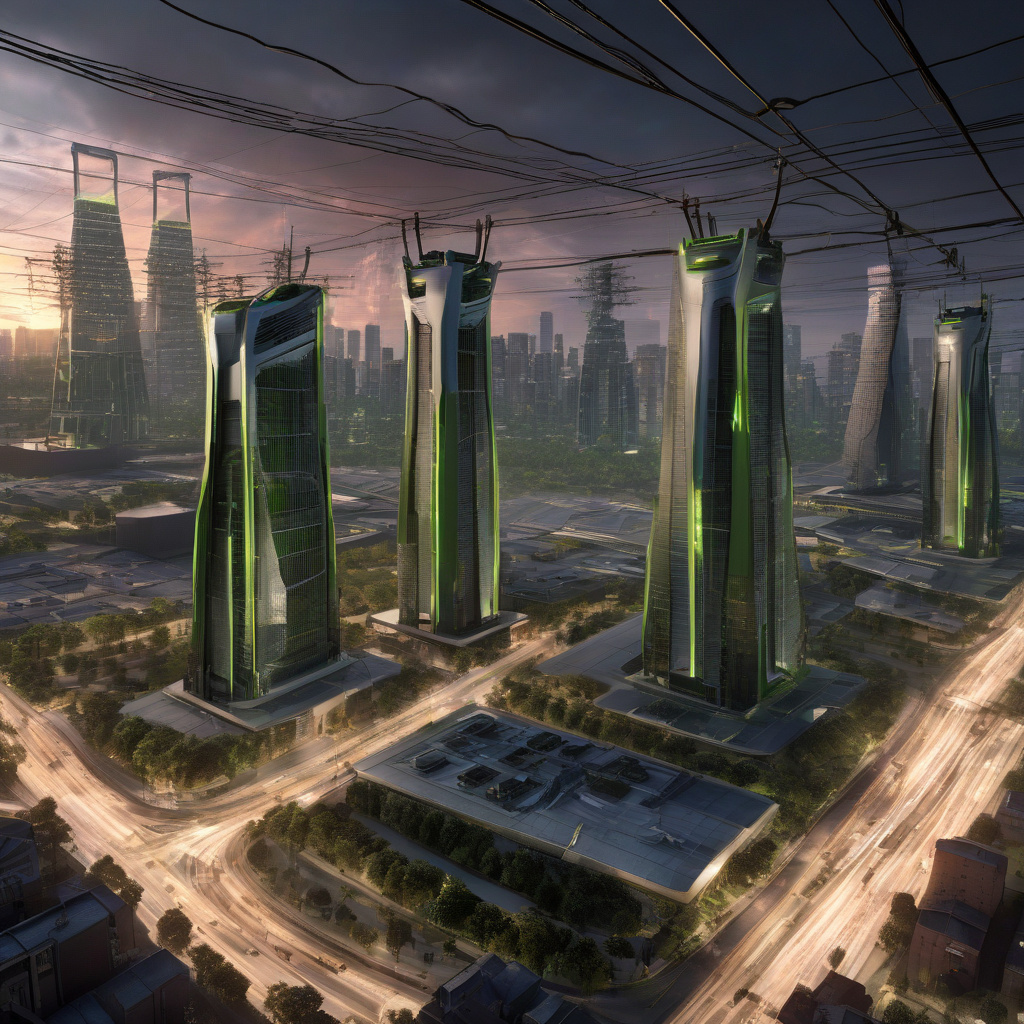In a world where artificial intelligence (AI) both creates and solves problems, a fascinating paradox emerges in the context of electrical grids. As Nvidia delves into the realm of AI to address issues within the power industry, a unique solution is taking shape. The Open Power AI Consortium, a key player in this endeavor, is leveraging domain-specific AI models to tackle the challenges that arise within the electrical grid, many of which are ironically caused by AI itself.
The intersection of AI and the power industry presents a complex landscape of interconnected systems and technologies. As AI continues to advance and integrate into various sectors, including energy management and distribution, it inadvertently introduces new challenges to the stability and efficiency of electrical grids. These challenges range from increased demand variability to cybersecurity threats, requiring innovative solutions to ensure the reliable operation of power systems.
By harnessing the power of domain-specific AI models, the Open Power AI Consortium aims to mitigate the disruptions and vulnerabilities that AI introduces to the electrical grid. These specialized AI models are designed to analyze and optimize grid operations, predict potential failures, and enhance overall system resilience. Through targeted AI applications, the consortium seeks to proactively address issues such as load forecasting, grid optimization, and anomaly detection, thereby paving the way for a more sustainable and secure energy infrastructure.
One of the key advantages of using domain-specific AI models lies in their ability to provide tailored solutions to complex problems within the power industry. Unlike generic AI algorithms, which may lack the specificity and nuance required for grid-related challenges, domain-specific models are finely tuned to address the unique dynamics of electrical grids. This targeted approach enables more accurate predictions, efficient resource allocation, and effective decision-making, ultimately leading to improved grid performance and stability.
Moreover, the collaborative efforts of industry leaders, such as Nvidia and the members of the Open Power AI Consortium, signal a shift towards a more integrated and proactive approach to managing the impact of AI on the electrical grid. By pooling expertise, resources, and data, these stakeholders are working towards developing AI-driven solutions that not only mitigate existing grid problems but also anticipate and prevent future issues caused by AI advancements.
As we navigate the intricate interplay between AI technologies and the power industry, it becomes increasingly clear that AI has the potential to both challenge and complement existing grid infrastructure. While AI-driven innovations have the capacity to introduce complexities and uncertainties, they also offer unprecedented opportunities for optimization and resilience. By harnessing the capabilities of domain-specific AI models and fostering collaboration among industry stakeholders, we can pave the way for a smarter, more adaptive electrical grid that is equipped to address the evolving demands of the digital age.
In conclusion, the initiative led by Nvidia and the Open Power AI Consortium exemplifies a proactive and collaborative approach to leveraging AI for solving grid problems caused by AI itself. By harnessing domain-specific AI models, industry experts are poised to unlock new solutions, enhance grid performance, and ensure the reliability of our energy systems in the face of technological advancements. As we embrace the transformative potential of AI in the power industry, it is essential to recognize the dual role it plays in both posing challenges and offering solutions, ultimately shaping a more resilient and efficient electrical grid for the future.

